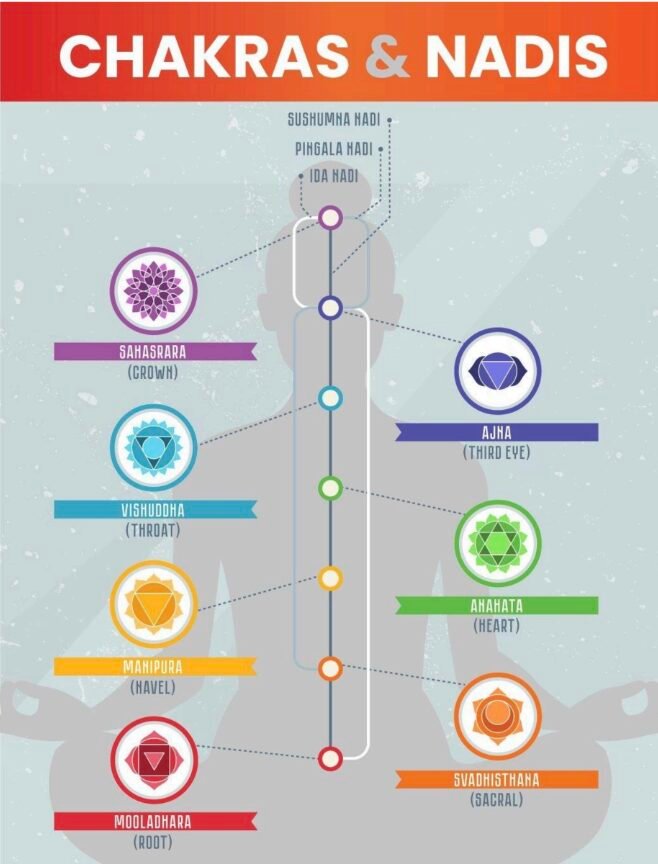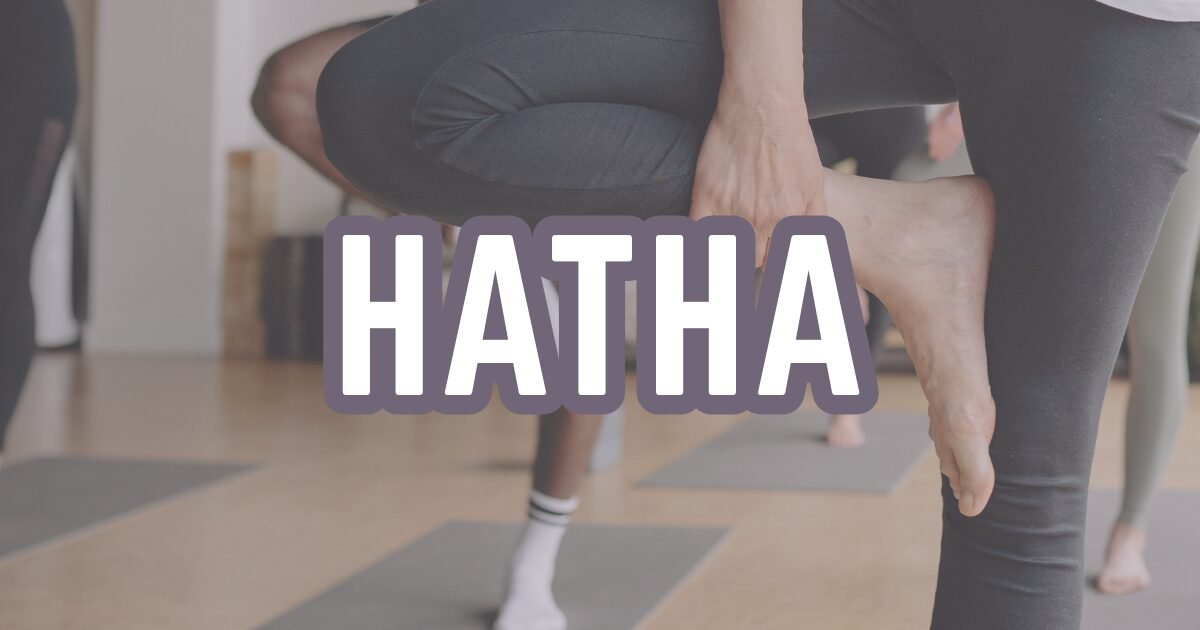Overview
- STYLE | Broad umbrella term, generally slower and more static
- STRUCTURE | Postures (asanas), breathwork (pranayama), sometimes meditation
- BREATH | Emphasis on controlled, deep breathing but not as specific as Ashtanga
- FLOW | No set sequence; postures are held for longer periods
- PACE | Slow to moderate, focused on alignment and mind-body awareness
- FOCUS | Balance between strength and flexibility with an emphasis on the breath and presence
- TEACHER ROLE | More instructional and gentle guidance
- VIBE | Accessible, beginner-friendly, and often restorative or foundational
Hatha Yoga: A Deep Dive into the Foundation of Modern Yoga Practice
Hatha Yoga is one of the most widely practiced and well-recognized styles of yoga in the world today. It is both a historical root of many modern yoga styles and a broad, flexible approach that invites practitioners of all levels to explore the profound connection between body, breath, and mind. Known for its slower pace and emphasis on alignment and mindful presence, Hatha Yoga offers a space for strength, flexibility, and inner awareness to flourish in harmony.
In this comprehensive guide, we will explore the origins of Hatha Yoga, its core structure and principles, the experience of practicing it, and the many benefits it provides for physical, mental, and emotional well-being.
The Meaning and Origins of Hatha Yoga
The word Hatha is derived from Sanskrit, where "ha" means "sun" and "tha" means "moon." Together, the term symbolizes the union of opposites—masculine and feminine, active and receptive, strength and surrender. This balance is not just metaphorical; it is at the heart of the physical and energetic practices of Hatha Yoga.
Historically, Hatha Yoga emerged as a system of physical techniques designed to support the deeper practices of meditation and spiritual awakening. Its roots can be traced back to ancient texts like the Hatha Yoga Pradipika (15th century), which outlined a system of postures (asanas), breath control (pranayama), cleansing practices (kriyas), and energy work aimed at preparing the body and mind for higher states of consciousness.
Over time, Hatha Yoga evolved and branched into many styles and approaches. Today, it serves both as a foundational practice for beginners and as a deeply restorative or therapeutic style for more advanced yogis. Most modern yoga classes owe some aspect of their methodology to Hatha Yoga.
Read Hatha Yoga Pradipika Here:
https://archive.org/details/HathaYogaPradipika-SanskritTextWithEnglishTranslatlionAndNotes/page/n5/mode/2up
Style and Structure
Style
Hatha Yoga is a broad umbrella term that refers to a physical yoga practice that generally emphasizes slower, more deliberate movements compared to faster, more dynamic styles like Vinyasa or Ashtanga Yoga. While the specific sequencing and emphasis can vary from teacher to teacher, Hatha classes typically include a blend of postures, breathwork, and sometimes meditation.
It is a practice rooted in stability and presence, inviting practitioners to explore postures with a focus on alignment, breath awareness, and conscious relaxation. Unlike "flow" styles of yoga, which transition quickly between poses, Hatha Yoga often emphasizes holding poses for longer periods to deepen awareness and physical conditioning.
Structure
A typical Hatha Yoga class incorporates several key elements:
- Asanas (Postures): The physical shapes that strengthen, stretch, and align the body. These may include standing poses, seated poses, twists, backbends, forward folds, and gentle inversions.
- Pranayama (Breathwork): Controlled, intentional breathing practices designed to balance the nervous system and cultivate energy and awareness.
- Meditation: Many Hatha classes include a period of seated or lying-down meditation to foster mental clarity and relaxation.
- Relaxation: The practice often concludes with Savasana (corpse pose), a deep relaxation that integrates the benefits of the session.
Breath and Flow
Breath
Breath is an essential pillar of Hatha Yoga. While not as prescriptive as Ashtanga Yoga's Ujjayi breath or synchronized movement with breath in Vinyasa, Hatha Yoga encourages deep, controlled, and mindful breathing throughout the practice.
Breath serves multiple purposes:
- It fosters presence, anchoring the mind in the here and now.
- It promotes relaxation and activation of the parasympathetic nervous system.
- It supports energy regulation, helping practitioners cultivate prana (life force) and vitality.
Flow
Hatha Yoga does not follow a rigid sequence of poses. Unlike styles such as Ashtanga or Bikram Yoga, there is no predetermined order. Teachers have the flexibility to design a practice based on the needs of the students and the theme of the class.
This lack of a fixed flow allows postures to be held for longer periods—often 3–5 breaths or more—giving students time to explore alignment, sensations, and breath awareness. The practice encourages depth over speed, inviting a meditative quality to each pose.
Pace, Focus, and Teacher Role
Pace
The pace of Hatha Yoga is generally slow to moderate. It is not intended to be a "workout" style of yoga (though it can certainly build strength), but rather a mindful exploration of body and breath. Each posture is approached with deliberate care, allowing students to refine their alignment and cultivate mind-body awareness.
Focus
The primary focus of Hatha Yoga is the balance between strength and flexibility, with an underlying emphasis on breath and present-moment awareness.
Practitioners develop:
- Physical strength and stability: through holding poses and building muscular endurance.
- Flexibility and mobility: through deep, sustained stretches.
- Mindful presence: through the conscious connection of breath, body, and awareness.
- Emotional and mental clarity: through slowing down and cultivating inner stillness.
Teacher Role
Teachers in Hatha Yoga classes typically adopt an instructional and supportive role. They provide clear alignment cues, offer hands-on or verbal adjustments, and encourage students to listen to their own bodies. The atmosphere is often gentle and inclusive, making space for both beginners and experienced practitioners alike.
Rather than pushing students to achieve a particular aesthetic in a pose, Hatha Yoga teachers emphasize the internal experience—how the pose feels, how the breath flows, and how awareness evolves.
Vibe and Accessibility
One of the most beautiful qualities of Hatha Yoga is its accessibility.
- It is beginner-friendly, welcoming those who are new to yoga or seeking a less intense practice.
- It is inclusive, accommodating various body types, ages, and fitness levels.
- It is often restorative and foundational, providing a grounding practice that complements more dynamic yoga styles or other forms of physical activity.
While advanced practitioners can deepen their experience through subtle refinements of breath, alignment, and energetic awareness, Hatha Yoga remains a practice that anyone can access.
The overall vibe of a Hatha class is calm, centered, and mindful. Rather than leaving the class feeling overstimulated, students often feel relaxed, balanced, and reconnected to their bodies and breath.
Benefits of Hatha Yoga
Hatha Yoga offers a wide array of benefits that support holistic well-being:
Physical Benefits
- Increased flexibility and joint mobility
- Improved posture and alignment
- Enhanced strength and muscular endurance
- Greater balance and coordination
- Improved respiratory function through breathwork
- Stimulation of circulation and lymphatic flow
Mental and Emotional Benefits
- Reduction of stress and anxiety
- Enhanced emotional resilience
- Improved concentration and mental clarity
- Increased body awareness and self-acceptance
- Cultivation of mindfulness and present-moment awareness
Energetic and Subtle Benefits
- Balance of the body's energy systems (chakras and nadis)
- Greater vitality and sense of inner harmony
- Preparation for deeper meditation and spiritual exploration

The chakra and nadi system in yoga philosophy
Who Is Hatha Yoga For?
One of Hatha Yoga's greatest strengths is its adaptability. It is suitable for:
Beginners
Those looking to start a yoga practice in a supportive, non-intimidating environment.
Older Adults
Those seeking a practice that supports joint health, balance, and vitality.
Athletes
Those wanting to improve flexibility, reduce injury risk, and cultivate mindfulness.
Busy Professionals
Those needing stress relief and a physical "reset."
Advanced Yogis
Those wanting to refine their alignment, breathwork, and inner awareness.
Whether used as a standalone practice or as a complement to other forms of movement, Hatha Yoga offers a timeless and invaluable pathway to well-being.
Conclusion
At its heart, Hatha Yoga is a practice of balance—between strength and flexibility, activity and rest, effort and ease. It invites us to slow down, breathe deeply, and connect with ourselves on every level—physical, mental, emotional, and energetic.
Far from being "just stretching," Hatha Yoga provides a profound opportunity for self-exploration and inner transformation. It is a living tradition that honors the wisdom of the body, the intelligence of the breath, and the boundless potential of conscious awareness.
Whether you are stepping onto the mat for the first time or returning after years of practice, Hatha Yoga offers an open invitation: to move, to breathe, to be.
Explore Related Yoga Styles
If you enjoy the steady, foundational pace of Hatha but wish to refine alignment further, Iyengar Yoga offers precision and structure. If you are ready to add more heat and dynamism, the flowing sequences of Vinyasa or the disciplined path of Ashtanga may call to you. If inward focus and energy work inspire you, Kundalini Yoga channels movement, mantra, and breath into spiritual awakening. For those seeking deep rest and renewal, Restorative Yoga provides a gentle, nurturing practice that replenishes body and spirit. And if intensity appeals, Hot Yoga infuses Hatha's postures with the challenge of heat, creating a purifying and powerful experience.
Each style grows from the roots of Hatha, reminding us that the path of yoga is vast, varied, and always returning us home to ourselves.



